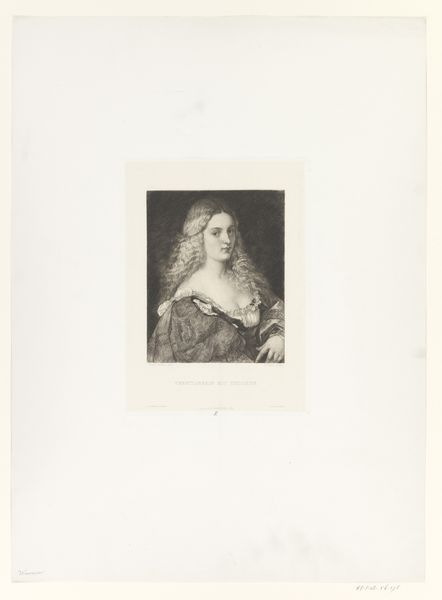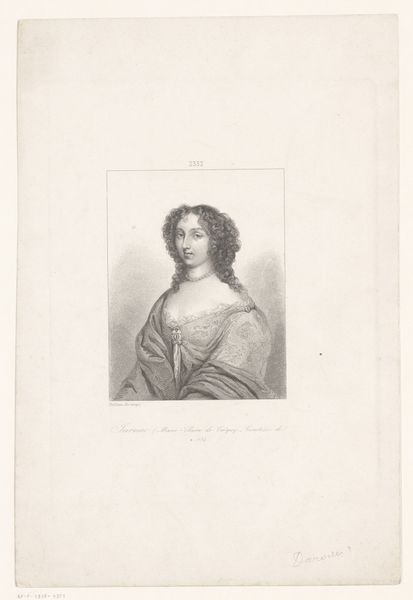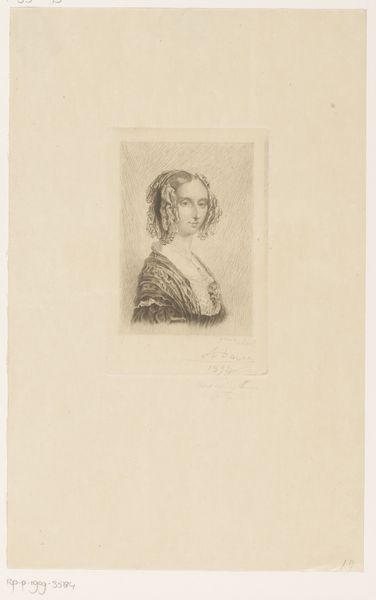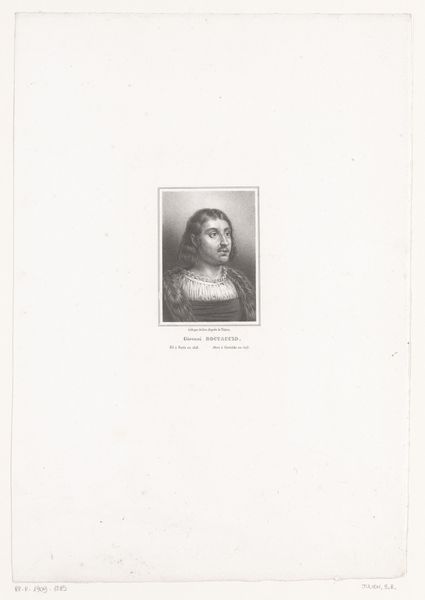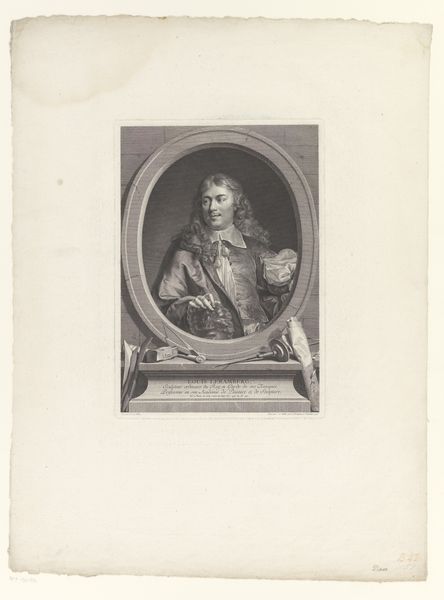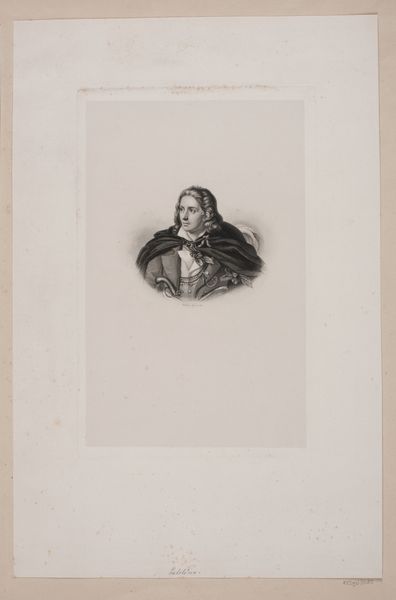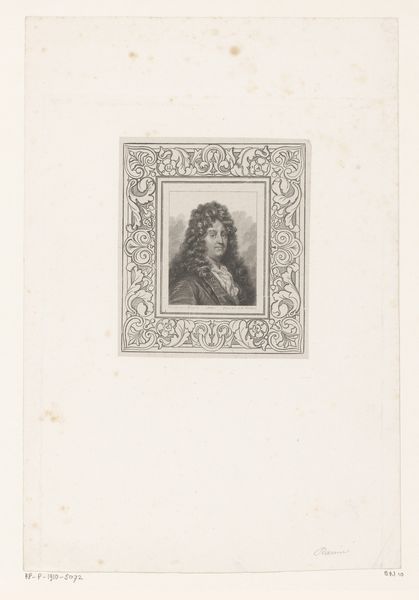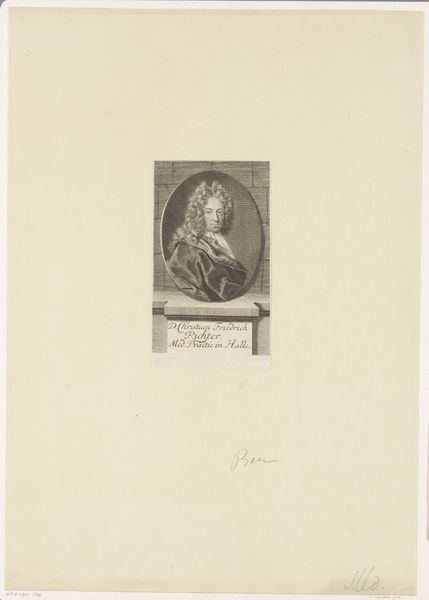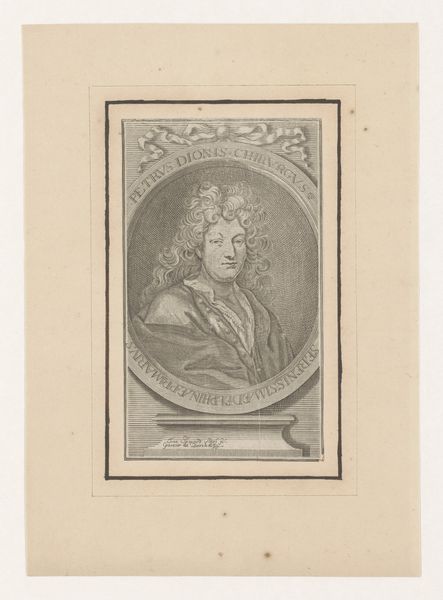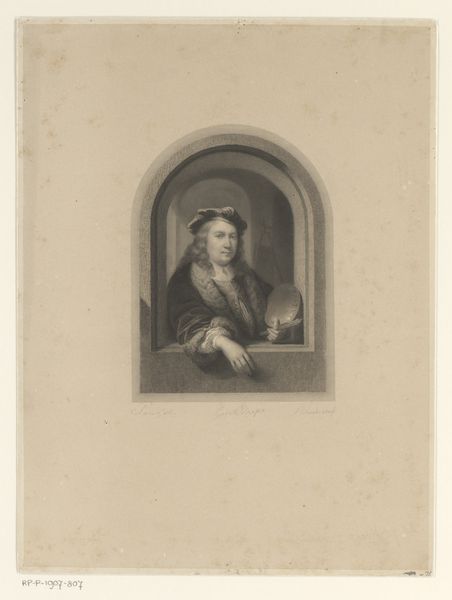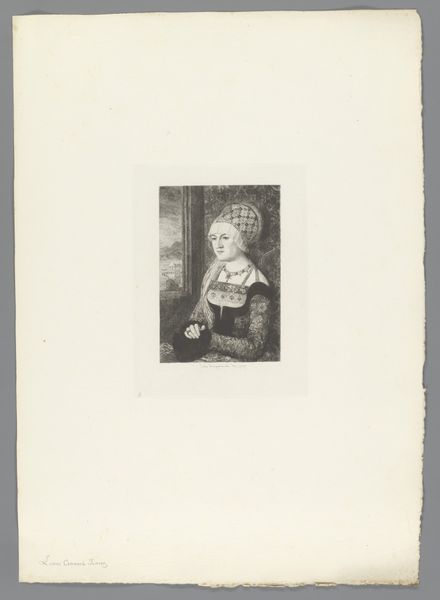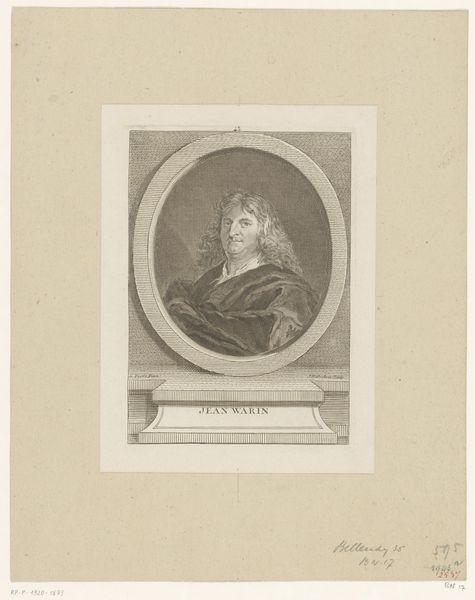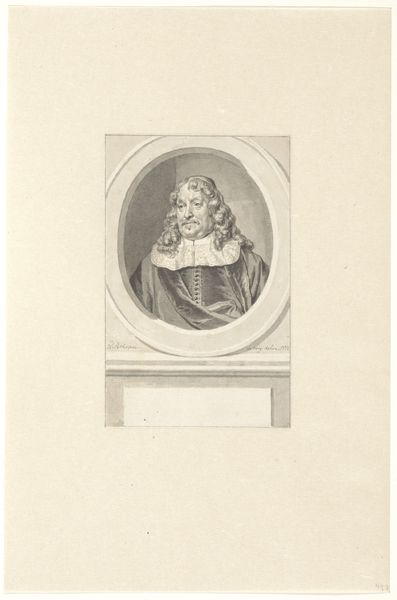
Dimensions: height 255 mm, width 172 mm
Copyright: Rijks Museum: Open Domain
Curator: Immediately I’m struck by this print – its depth, its darkness. The sitter is framed against such a black background – there's a moodiness there, wouldn’t you say? Editor: Absolutely. And to put us in context, this is "Portret van een onbekende vrouw" or “Portrait of an unknown woman”. William Unger worked on it sometime between 1847 and 1932. He’s used etching and graphite on paper to achieve that…moodiness you mentioned. Curator: An unknown woman, eternally preserved! I keep returning to her eyes – so full of something. It's like she carries the secrets of her era. Unger really has captured an enigmatic character in monochrome. Editor: And within that, Unger references something bigger, in this artwork. I mean the dramatic lighting and rich textures clearly draw from the Dutch Golden Age and baroque portraiture—those historical echoes imbue the woman’s gaze with a certain…weight, a consciousness of history. Curator: Perhaps the fact we *don't* know her name intensifies it. She stands for all the unknown stories of women throughout the ages. All those lives, unseen but lived... it gets to me. Editor: Precisely. She becomes an archetype, embodying beauty, mystery, and the passage of time. Her necklace for instance, a classic string of pearls – represents status but also purity and a connection to something timeless. I like that paradox: historical weight alongside the ephemeral touch of human emotion. Curator: A potent combo. It makes you consider our modern obsession with immediate access to information, where even breakfast gets hashtagged. Unger's woman invites quiet reflection, away from all that digital clamour. Editor: Indeed. She embodies a form of quiet resistance to the noise, inviting us to interpret, reflect and perhaps even identify some shared experience through those symbols, too. What do you make of it all then? Curator: I like your final word, shared. The most striking part, at least for me, is that even through the image is so dated, the humanity comes through in the subject. I mean that shared essence helps cross any kind of temporal gap. And to find a space that is not time-locked...what's better than art, anyway?
Comments
No comments
Be the first to comment and join the conversation on the ultimate creative platform.
